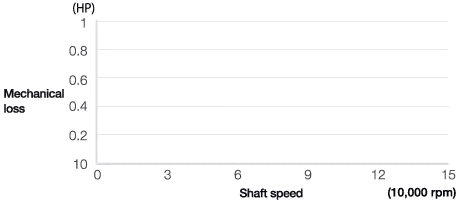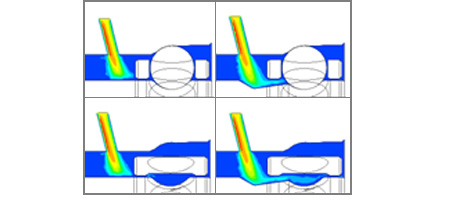Turbocharger with potential for rapid demand expansion
Turbochargers had their heyday in the 1980s, being installed in many racing cars and sports cars to enhance the speed and maximum output of the cars. In those days, there was trade-off relation between turbochargers and fuel economy. Recently, they have attracted attention again as a device for boosting the insufficient output of engines that are downsized to meet environmental restrictions. Thus, their arena has expanded to general automobiles and eco-cars.
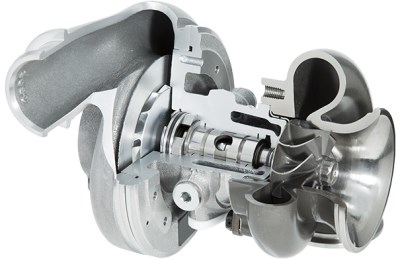
High-heat-resistant ball bearing unit for automobile turbochargers
Bearings that determine turbocharger performance
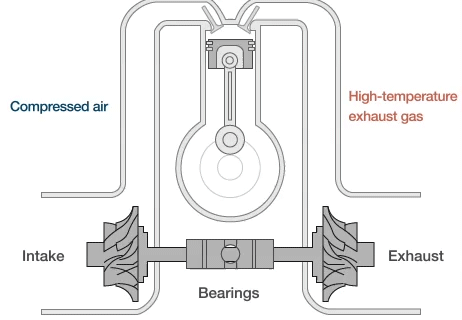
Turbochargers allow the production of greater engine output with a smaller engine capacity by improving engine combustion efficiency through the recycling of exhaust gas that is normally discarded.
A turbocharger harnesses exhaust gas pressure from the engine cylinder to drive a turbine and compressor mounted on the same shaft. Air taken in by an automobile is compressed by the compressor and sent to the cylinder, which increases air intake and improves combustion efficiency. The turbine and compressor play important roles to efficiently send compressed air to the engine. In 2008, Minebea started developing a new type of bearing for a turbine main shaft that directly influences the rotational efficiency.
A turbine main shaft bearing is used for a turbine driven by ultrahigh-temperature exhaust gas of over 800°C, and it must endure ultrahigh speed of over 200,000 revolutions while continuously immersed in oil. For this reason, many turbochargers for general automobiles used oil-lubricating bearings that are resistant to harsh environments. However, since the friction resistance of oil-lubricating bearings increases at acceleration/deceleration due to its structure, the speed following capability is inferior to that of ball bearings (particularly at cold engine start). This generates a time lag before intake air pressure increases after the accelerator pedal is depressed. Consequently, the driver feels the acceleration to be slow, and depresses the accelerator pedal more than necessary, which results in poor fuel economy. In actual city driving, since acceleration and deceleration are frequently repeated, it affects practical fuel economy.


Requirements for the new bearing
To address these issues, we had to improve the following four main points for the new type of ball bearing unit: Downsizing along with engine unit downsizing, high durability, high-heat resistance and low torque. In addition, we had to mass produce the bearings so that they could be widely adopted by general automobiles and eco-cars. Minebea, which has been continuously improving bearing production technology since its establishment, has begun tackling this challenge.
Development of high-heat-resistant ball bearing unit for various requirements
Minebea has improved combustion efficiency and reduced the time lag before automobile acceleration by adopting ball bearings instead of oil-lubricating bearings.
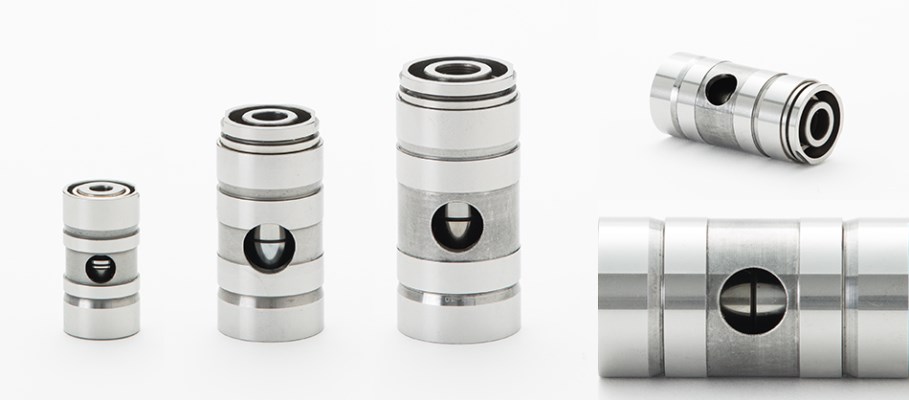
Three shaft diameters, 6 mm, 10 mm and 12 mm, are available. Displacements from 1.4 to 10 L are supported.
Compared to oil-lubricating bearings, the structure of ball bearings is more complicated. However, we solved the issues of durability and heat resistance by combining parts made from different materials. For the inner race and outer race, we adopted M50 that is also used for the main bearings of aircraft jet engines; and for balls, we adopted lightweight ceramic materials with low calorific value that are suitable for high revolution. We also applied special surface treatment to the retainer to improve the balls’ rotation efficiency. Besides downsizing, unitization allowed us to reduce the assembly work in the turbocharger manufacturer and improve the stability and balance of the entire part.
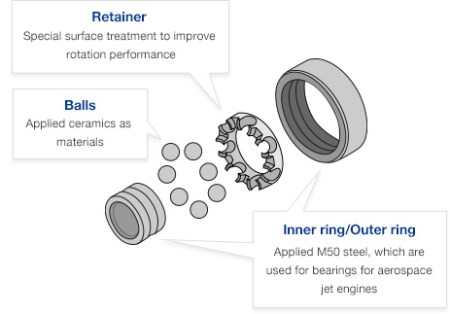
Sectional view of ball bearing unit
